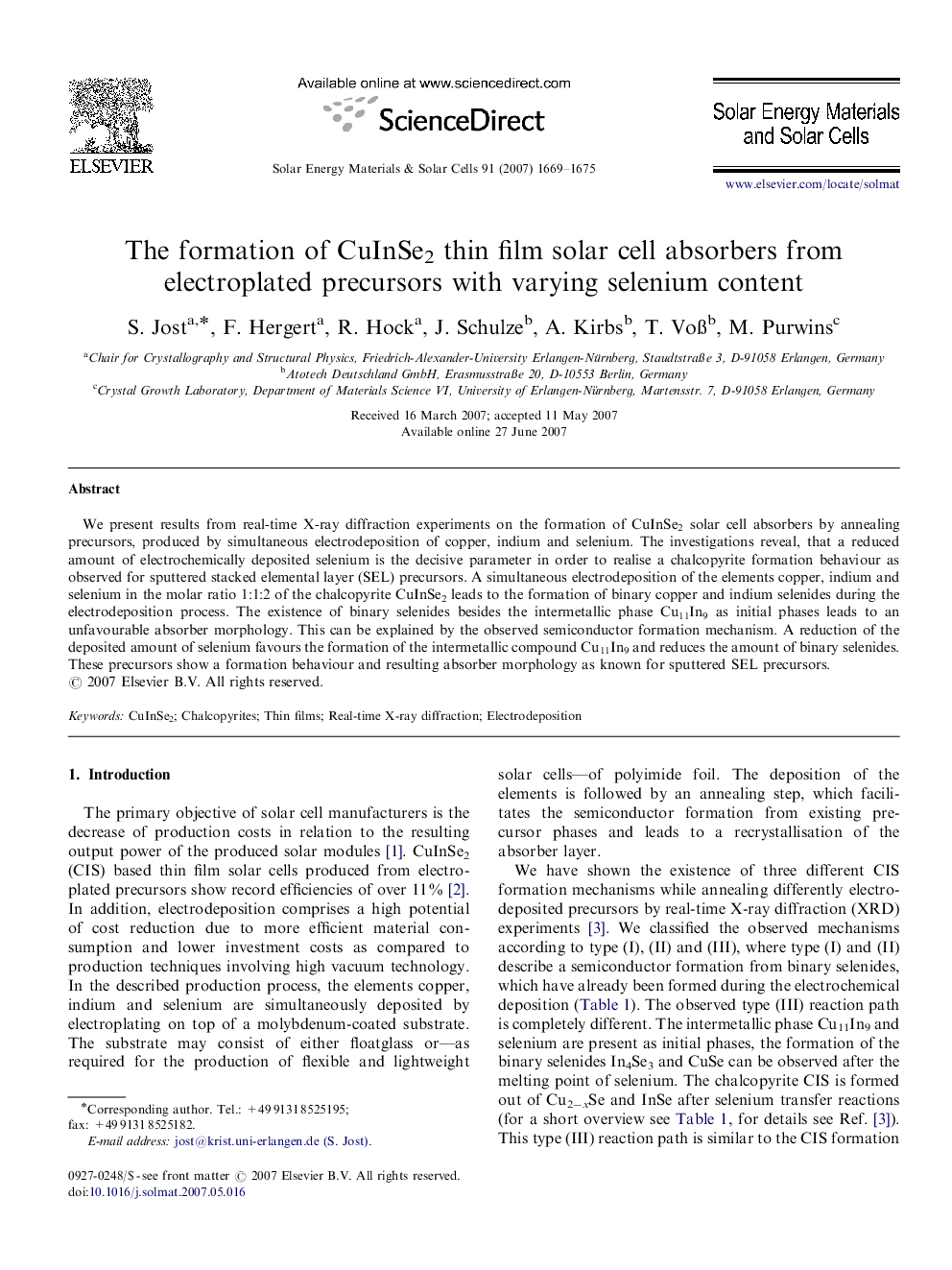| Article ID | Journal | Published Year | Pages | File Type |
|---|---|---|---|---|
| 81111 | Solar Energy Materials and Solar Cells | 2007 | 7 Pages |
We present results from real-time X-ray diffraction experiments on the formation of CuInSe2 solar cell absorbers by annealing precursors, produced by simultaneous electrodeposition of copper, indium and selenium. The investigations reveal, that a reduced amount of electrochemically deposited selenium is the decisive parameter in order to realise a chalcopyrite formation behaviour as observed for sputtered stacked elemental layer (SEL) precursors. A simultaneous electrodeposition of the elements copper, indium and selenium in the molar ratio 1:1:2 of the chalcopyrite CuInSe2 leads to the formation of binary copper and indium selenides during the electrodeposition process. The existence of binary selenides besides the intermetallic phase Cu11In9 as initial phases leads to an unfavourable absorber morphology. This can be explained by the observed semiconductor formation mechanism. A reduction of the deposited amount of selenium favours the formation of the intermetallic compound Cu11In9 and reduces the amount of binary selenides. These precursors show a formation behaviour and resulting absorber morphology as known for sputtered SEL precursors.
